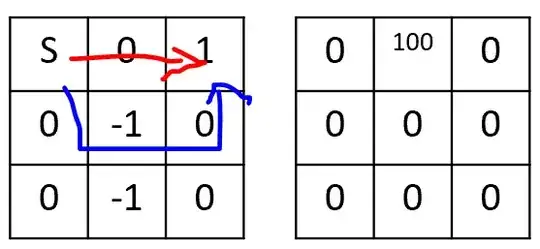It is known that every potential function won't alter the optimal policy [1]. I lack of understanding why is that.
The definition:
$$R' = R + F,$$ with $$F = \gamma\Phi(s') - \Phi(s),$$
where, let's suppose, $\gamma = 0.9$.
If I have the following setup:
- on the left is my $R$.
- on the right my potential function $\Phi(s)$
- the top left is the start state, the top right is the goal state
The reward for the red route is: $(0 + (0.9 * 100 - 0)) + (1 + (0.9 * 0 - 100)) = -9$.
And the reward for the blue route is: $(-1 + 0) + (1 + 0) = 0$.
So, for me, it seems like the blue route is better than the optimal red route and thus the optimal policy changed. Do I have erroneous thoughts here?
